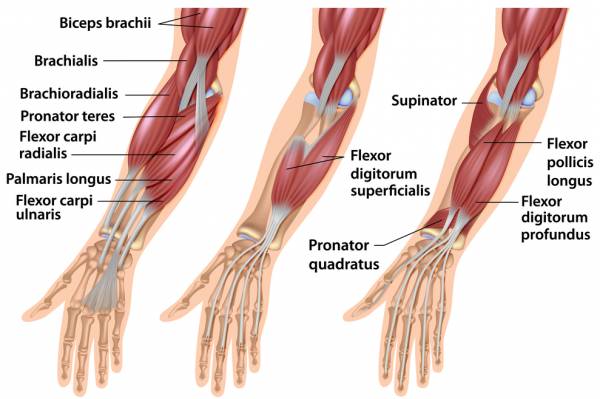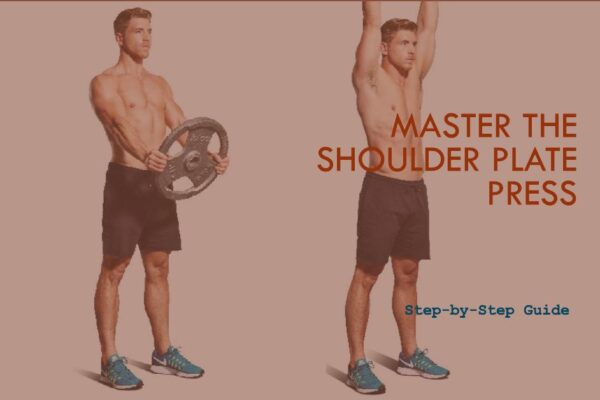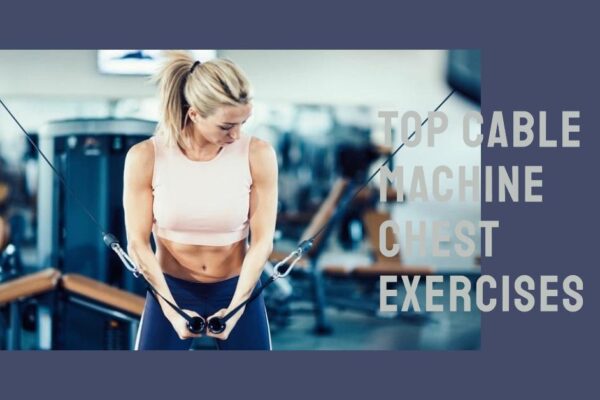The lateral bicep curl is an essential addition to any workout routine, particularly for those looking to develop and strengthen their upper body. This exercise specifically targets the bicep brachii muscle, promoting muscle growth and toning in the biceps and arms.
Unlike traditional bicep curls, the lateral bicep curl introduces a unique, lateral angle that adds an extra challenge and encourages a fuller range of motion. Not only does it stimulate the muscles more intensively, but it also promotes better posture and joint health.
What is a Lateral Bicep Curl?
A lateral bicep curl, also known as a side curl or standing lateral curl, is a strength training exercise that specifically targets the biceps muscles. Unlike standard bicep curls, where you curl the weight up towards your shoulder, in a lateral bicep curl, you lift the weight out to your side, keeping your elbow stationary.
Also read: Maximize Forearm Strength with Barbell Reverse Wrist Curl

Anatomy and Muscles Worked
Muscles Targeted by the Lateral Bicep Curl
The lateral bicep curl is a compound exercise that engages multiple muscle groups:
- Biceps Brachii: This muscle group in the upper arm, consisting of a long head and a short head, is the primary target. The lateral curl motion specifically strengthens and tones these muscles.
- Brachialis: Located underneath the biceps, this muscle contributes to elbow flexion during the curl.
- Brachioradialis: This large forearm muscle aids in the lifting motion and provides stability throughout the curl.
- Deltoids: Specifically, the lateral or middle head of this shoulder muscle is engaged as you lift the weights out to your sides.
- Forearm Flexors: These muscles are worked as they help maintain a firm grip on the weight during the curl.

Proper Technique for Lateral Bicep Curls
A. Set-Up and Equipment Needed
To perform the Lateral Bicep Curl, you’ll need the following equipment:
- You will need a pair of dumbbells.
- Choose a weight that is challenging but allows you to maintain proper form throughout the exercise.
B. Step-by-Step Guide
Here’s a detailed breakdown of how to execute the exercise correctly:
- Initial Position
- Stand tall with your feet shoulder-width apart.
- Hold a dumbbell in each hand with your arms fully extended, and palms facing your torso. This is your starting position.
2. Execution of the Exercise:
- Keeping your upper arms stationary, exhale and curl the weights while contracting your biceps.
- Continue to raise the weights until your biceps are fully contracted and the dumbbells are at shoulder level. Keep the rest of your body still.
- Hold the contracted position for a brief pause as you squeeze your biceps.
- Inhale and slowly begin to lower the dumbbells back to the starting position.
How Does Lateral Bicep Curl Differ from Regular Bicep Curls?
The main difference between a lateral bicep curl and a regular bicep curl lies in the direction of the movement. In a regular curl, you lift the weight in a vertical plane, moving it straight up towards your shoulder.
In a lateral curl, however, you lift the weight in a horizontal plane, moving it outwards to the side of your body.
This slight variation in movement puts a different kind of strain on your biceps, helping to work them in a slightly different way and promote more balanced muscle development.
Lateral Bicep Curl Benefits
Lateral bicep curls are an effective exercise for enhancing bicep development and overall upper body strength. Here’s why:
- Targeted Muscle Engagement: Lateral bicep curls engage not only the biceps but also the brachialis and brachioradialis, promoting balanced arm development.
- Improved Grip Strength: By engaging forearm muscles, lateral curls enhance grip strength which is essential for many sports and daily tasks.
- Better Isolation: The exercise isolates the biceps better than traditional curls, leading to more effective muscle building.
- Versatility: They can be performed with various equipment – dumbbells, barbells, or resistance bands, making them adaptable to different fitness levels and environments.
- Functional Fitness: They improve performance in activities that require pulling or lifting, contributing to functional fitness.
Variations of Behind the Back Barbell Wrist curl
Seated Lateral Bicep Curl
This variation is performed sitting on a bench, which helps isolate the biceps by minimizing the potential for body movement.
Technique and Execution:
- Sit on a bench with your feet flat on the ground.
- Hold a dumbbell in each hand with your arms fully extended, and palms facing in.
- Keeping your upper arms stationary, curl the weights to your shoulders while keeping your palms facing in.
- Slowly return to the starting position.
Lateral Bicep Curl with Resistance Bands
This variation uses resistance bands instead of weights, providing constant tension throughout the movement.
Proper Form and Execution:
- Stand on the center of a resistance band, holding the ends in each hand with your arms fully extended, and palms facing in.
- Keeping your upper arms stationary, curl your hands towards your shoulders while keeping your palms facing in.
- Slowly return your hands to the starting position.
Modifying the Lateral Bicep Curl for Different Fitness Levels
The Lateral Bicep Curl is a versatile exercise that can be adjusted to accommodate various fitness levels – from beginners to advanced fitness enthusiasts.
For Beginners:
As a beginner, it’s essential to focus on form and control rather than the weight used. Lighter weights or resistance bands can be an excellent place to start as they allow for slow, controlled movements.
- Lighter Weights: Start with a weight that feels manageable but still challenging towards the last couple of reps of your set. As your strength builds, you can gradually increase the weight.
- Resistance Bands: These are a fantastic alternative to dumbbells. They provide constant tension throughout the curl, helping to activate the bicep muscles effectively.
- Seated Lateral Bicep Curls: Performing the exercise seated helps with stability and allows for more focus on the bicep without worrying about overall balance.
Progressions for More Advanced Fitness Enthusiasts:
For those at a more advanced fitness level, there are several ways to make the lateral bicep curl more challenging.
- Heavier Weights: Increasing the weight is the most straightforward progression. Ensure you can maintain good form throughout the entire set.
- Incline Lateral Bicep Curls: This variation changes the angle of the curl, introducing a new challenge to the biceps.
- Cross-Body Lateral Bicep Curls: Curling the weight across the body adds a twist to the traditional curl, engaging the biceps from a different angle.
- Slow Eccentric Phase: Slow down the lowering phase of the curl. This increases time under tension, leading to greater muscle growth.
- Superset with another Bicep Exercise: Combine lateral bicep curls with other bicep exercises like hammer curls or concentration curls. This increases the intensity of the workout and stimulates further muscle growth.
Remember, it’s crucial to listen to your body. Progress at a pace that feels challenging but manageable, and ensure you maintain proper form regardless of the weight or variation you choose.
Also read: Unlock the Secrets of Seated Alternating Dumbbell Curls
Tips to Maximize Results and Safety
To get the most out of your Lateral Bicep Curl while ensuring safety, consider these tips:
A. Warm-up and Stretching: Prioritize a warm-up and incorporate wrist and forearm stretches to prepare your muscles.
B. Progressive Overload: Gradually increase weight or repetitions to challenge your muscles and promote growth.
C. Proper Recovery: Allow ample rest and recovery time to avoid overuse injuries and promote muscle repair.
D. Listen to Your Body: Pay attention to any discomfort or fatigue and adjust your technique or weight accordingly.
E. Seek Professional Guidance: Consider working with a qualified fitness professional for personalized guidance.
By following these tips, you can optimize your results and maintain a safe workout routine.
Common Mistakes to Avoid
To get the most out of your Lateral Bicep Curl and prevent potential injuries, it’s essential to avoid these common mistakes:
A. Incorrect Form
- Make sure your elbows are close to your torso and your back is straight. Avoid swinging your arms or using your back to lift the weights.
B. Using Too Much Weight
- Lifting too heavy can lead to poor form and potential injury. Start with a lightweight and increase gradually as you get stronger.
C. Rushing the Movement
- The key to effective muscle engagement is slow, controlled movements. Don’t rush through the exercise.
D. Not Completing Full Range of Motion
- Ensure you fully extend your arm at the bottom of the curl and fully contract your bicep at the top for maximum muscle engagement.
Comparing Lateral Bicep Curls to Other Bicep Exercises
Lateral Bicep Curls are a unique addition to a bicep routine due to the specific angle they work the muscle. Compared to traditional curls, they provide a unique tension profile and recruit different muscle fibers.
Here’s a comparison of Lateral Bicep Curls with other popular bicep exercises in table form:
| Exercise | Targeted Muscle(s) | Equipment Needed | Difficulty Level | Unique Benefit |
|---|---|---|---|---|
| Lateral Bicep Curl | Biceps brachii (long head and short head) | Dumbbells | Intermediate | Targets the biceps at a unique angle, stimulating different muscle fibers |
| Hammer Curl | Biceps brachii, Brachialis, Brachioradialis | Dumbbells | Beginner to Intermediate | Provides balanced development of upper arm muscles |
| Concentration Curl | Biceps brachii | Dumbbells | Intermediate | Allows for intense isolation of the biceps |
| Barbell Curl | Biceps brachii, Brachialis, Brachioradialis | Barbell | Beginner to Intermediate | Allows heavy lifting, ideal for mass building |
| Preacher Curl | Biceps brachii (especially lower biceps) | Preacher bench, Dumbbells or Barbell | Intermediate | Isolates the biceps by eliminating momentum |
Remember, the best exercise routine is one that you enjoy and can stick with consistently. Mixing up your exercises, including lateral bicep curls, can keep your workouts exciting and challenging.
Frequent Question Answers
By addressing the following frequently asked questions, we hope to provide clarity and guidance on incorporating the Lateral Bicep Curl into your fitness routine. Remember to listen to your body, start at an appropriate level, and gradually progress for optimal results.
| FAQ | Answer |
|---|---|
| What muscles does the Lateral Bicep Curl target? | The Lateral Bicep Curl mainly targets the biceps brachii (both long head and short head). |
| How often should I do Lateral Bicep Curls? | It’s generally recommended to train each muscle group 2-3 times per week, allowing at least one day of rest in between. |
| What equipment do I need for Lateral Bicep Curls? | You will need a pair of dumbbells for this exercise. |
| Can beginners do Lateral Bicep Curls? | Yes, but it’s important to start with light weights and focus on maintaining proper form. |
| How is a Lateral Bicep Curl different from a regular curl? | The main difference lies in the angle at which the bicep is worked. In a Lateral Bicep Curl, the arm is extended out to the side, providing a unique tension profile and recruiting different muscle fibers. |
| Can I do Lateral Bicep Curls if I have a shoulder injury? | It depends on the nature of your injury. Always consult with a healthcare professional before starting any new exercise regimen if you have an existing injury. |
Conclusion
Lateral Bicep Curls are a fantastic way to target the biceps from a unique angle, promoting muscle mass, strength, and endurance. However, maintaining proper form is paramount to prevent injury and optimize results. Balance in your exercise routine is also vital for overall muscular development. If you haven’t yet, consider adding Lateral Bicep Curls to your next workout. With consistency and correct technique, you’ll notice significant improvements in your bicep size and strength. Happy lifting!
Sources
- The Lateral Bicep Curl: The Complete How-To Guide
- Lateral Dumbbell Curls from Matt Knight Official.
- How to Do Biceps Curls: Proper Form, Variations… from Verywell Fit.
- 10 Different Ways to Do a Biceps Curl from Men’s Journal.
- How to Do the Perfect Bicep Curl & Build Bigger… from Men’s Health.






Leave a Reply